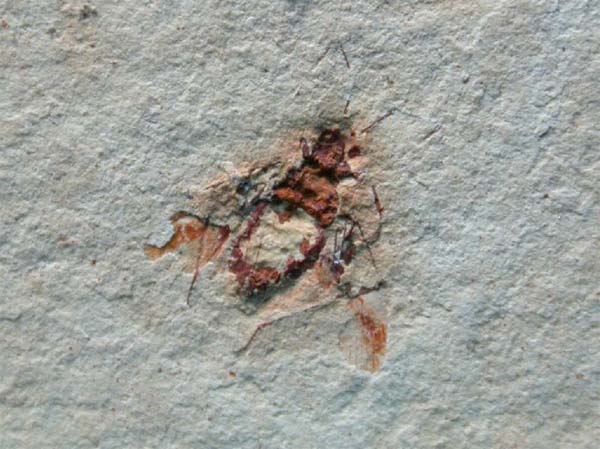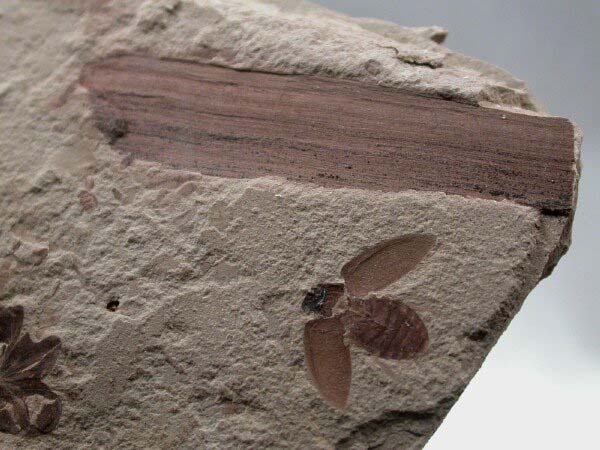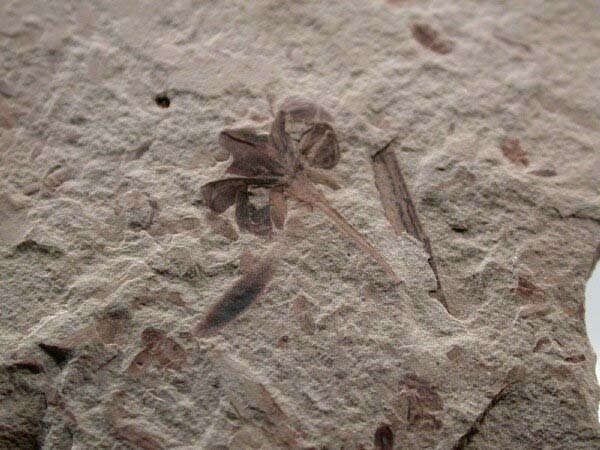Quarry Beetles

Image via
Sometimes when I’m carving lumps of stone into sculpture, I find fossils – or sometimes I see them at the quarry. Usually they have been what look like plant stems, or seeds. This beetle fossil was revealed in a piece of stone from the Kent RIGS – it is a Cupedid. Cupedidae is a small family of beetles, notable for the square pattern of ‘windows’ on their elytra (hardened forewing), which gives the family their common name of reticulated beetles. I’m just amazed at the detail held within this piece of sandstone!

Image via
And likewise, of this insect bearing stone from Brazil where quarrying operations for the purpose of obtaining paving stones exposes the remarkable insect fauna – in this case an unidentified small beetle.

Image via
This large beetle is frozen in flight, several small beetles and weevils are also scattered around the stone, and a beautiful flower preserved with its stem section, making for a fine mix of lifeforms – this stone came from The Green River Formation deposits of Wyoming, Colorado, and Utah.

Image via
I find these entrancingly beautiful – stone holds such enthralling and endless fascination.

4 Comments
They are so beautiful Jennifer, what a lovely post. I have always thought it must be quite magical working with stone (when it all goes right).
Thankyou! You’re right, working with stone is magical – and addictive – or that is how I have found it, even if it doesn’t go quite right, which sometimes happens, but then it’s usually because I’m not listening to it!
so what to you do with a small fossil when you come across one in your carving? do you incorporate it, let it be, or carve it out?
When I find one, I suddenly forget about the carving and commence an excavation and see if I can get it out of the stone intact – then back to reality and check it won’t destroy the sculpture. Occasionally I get what are called upcasts (where little pockets of softer/different material are mixed in the stone), and these are swear causing irritants, and often mean a compromise of the line I’m wanting, because they need to be chiseled away, back to sound material. I’ve never left a fossil in a carving and try and use stones which are pure (of course all the markings in Limestone are fossils, as that is the makeup and beauty of the stone!) I’ve got a little box with all my found fossils in – I take them out to admire and reminisce about from time to time.